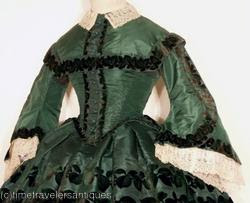>

I seem to have temporarily lost my muse. It’s never permanent. It just seems to happen when I’m preoccupied with working on client readings and when I’m stressed out about everyday mundane things. As a writer, the hardest thing is to keep the momentum going from the first word you type on the manuscript until the last. Writing a novel or a nonfiction book is anything but easy. You have to have a lot of self-discipline just to make yourself sit down and do the work everyday because it’s not going to write itself. Then, of course, you have to worry about plot structure, character development, pacing, grammar and mechanics, editing, more editing and yet still more editing. The average novel takes about two years to complete from conception to completion and that’s if you work at it every day. With my first novel, From the Darkness Risen, I was still in high school when I started it and it took six years, I think, to complete. It was a lot of trial and error to find my voice and I don’t even think I got my footing until halfway through.
Now I’m older and I’ve got a lot of writing experience under my belt. I don’t think Isabelle, Eva, Robert and Thaddeus are done telling their story yet either. I have been tinkering with the ideas for a sequel for about a year now, tentatively titled Fire on the Mississippi, but I didn’t sit down to really put serious pen to paper until recently. Being imprisoned in the motel during the flood made me want to write out some of my ideas but sharing a room with my grandmother all day every day wasn’t that easy. I got started not long after we got back home but, of course, I’ve lost my muse. I think I’m going to have to reread my own novel to remember all the nuances I put into the characters. One thing I always hate with sequels is when they sound like totally different books because it’s clear the author stepped too far away from the first book.
I’m also a very visual person. Maybe I should be a screenwriter instead of a novelist! I like to scout locations and look for pictures of people, places and things that speak to me as part of the story. I translate images into words fairly well. So I have been pulling together some images that I’m using to help me get my creative mojo going again.

The above picture is a lithograph of St. Louis done in 1854, which is about nine years before the setting of the sequel, and you can see the Mississippi River in the background. Eva finds herself still living in St. Louis with Thaddeus in Fire on the Mississippi despite her best laid plans to be a pampered housewife back home in Charleston as she was bred to be. She is struggling to cope with life as a “cripple” and feeling restless, wondering if she might have rushed into marriage no matter how much she loves Thaddeus. It’s her restlessness that gets her mixed up in espionage again and she falls in with the boat burners, which were not unlike modern terrorist organizations. Her life spirals into chaos and in classic Eva fashion, she believes she’s doing the right thing but is really hurting other people.

The above picture is a lithograph of Charleston, South Carolina, during the Civil War with Charleston Harbor in the background, I think. In Fire on the Mississippi, Isabelle’s story takes a backseat to Eva’s but it is nonetheless interesting. The beginning of the sequel finds Isabelle, Robert, Cole and Willie living with her mother on the Battery. Isabelle’s struggling with a difficult pregnancy and Robert’s headed back to active duty. I think the direction I’m going to go with this sequel is pushing the boundaries and testing how far the war can strain marriages. I see in the news a lot about how these modern wars are straining military marriages and I want to get into the nitty gritty of how it was to be a wife in a city nearly occupied by the enemy on a daily basis.
I also wanted to give faces to my characters. I went through the wartime images on my computer until I found some people that looked like the characters I made up in my head. I haven’t found a Robert or a Thaddeus yet because I tend to have very specific, unique looks for my male characters for some reason, but here are the three faces to Eva, Isabelle and Willie, in that order. Are these how the characters looked in your mind when you read From the Darkness Risen? I’m curious.
Read More
























